Plant Bok Choy at Home? Absolutely! Imagine stepping outside your back door and harvesting fresh, crisp Bok Choy for your stir-fry. Sounds dreamy, right? Well, it doesn’t have to be just a dream! This humble vegetable, also known as Chinese cabbage, has been cultivated in China for over 1,500 years, becoming a staple in Asian cuisine and now, increasingly, in gardens worldwide.
But why should you bother to plant Bok Choy at home? In today’s world, where we’re all striving for healthier lifestyles and more sustainable practices, growing your own food is a fantastic way to take control of what you eat. Plus, store-bought Bok Choy can sometimes be a little… lackluster. By growing your own, you’re guaranteed the freshest, most flavorful Bok Choy imaginable. And let’s be honest, there’s something incredibly satisfying about nurturing a plant from seed to table.
This DIY guide is your passport to Bok Choy bliss! We’ll walk you through every step, from choosing the right seeds to harvesting your bountiful crop. No green thumb required – just a little enthusiasm and our easy-to-follow tips. Get ready to impress your friends and family with your homegrown Bok Choy creations!
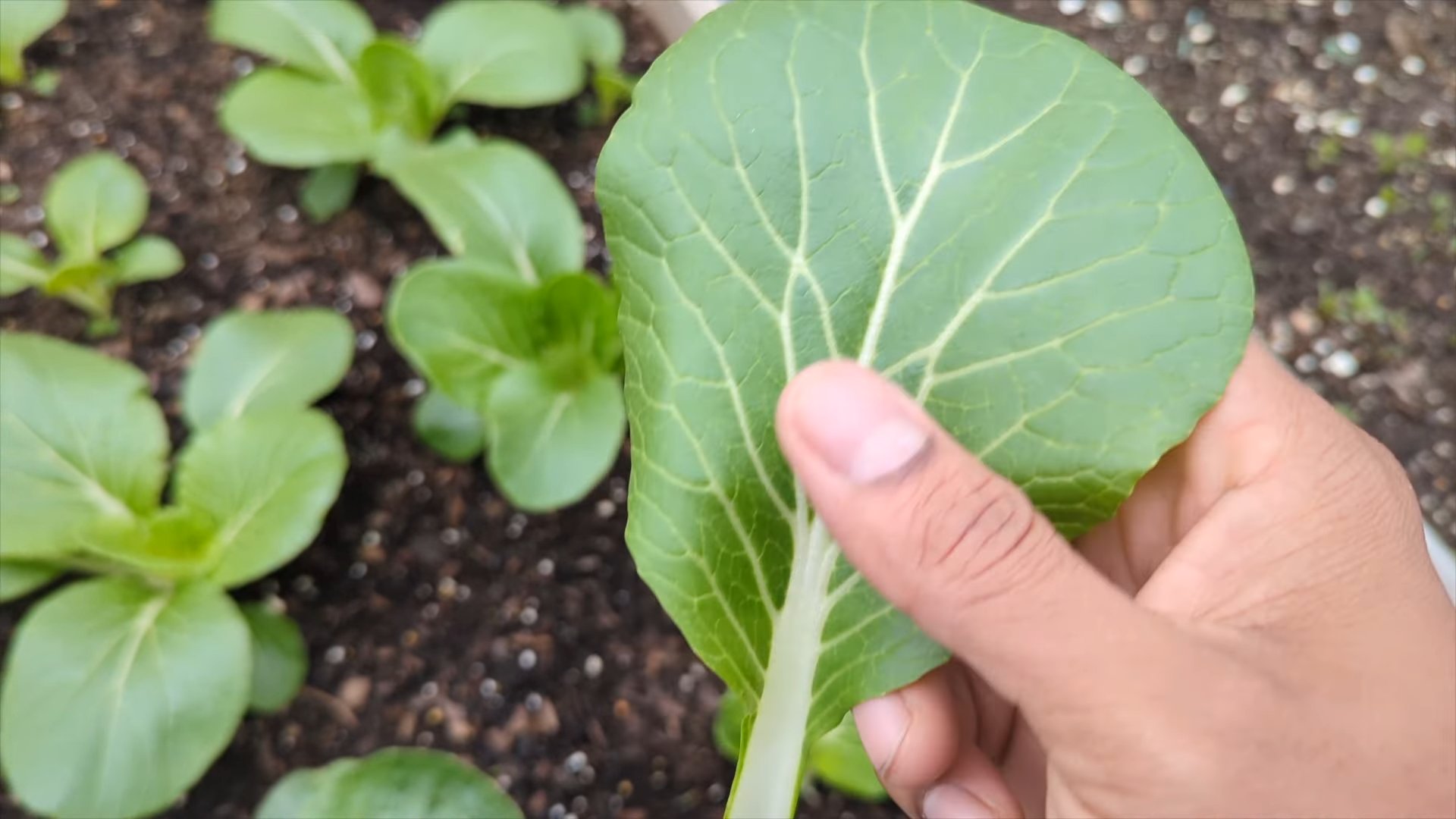
Growing Bok Choy at Home: A Beginner’s Guide
Hey there, fellow gardening enthusiasts! Ever thought about growing your own bok choy? It’s surprisingly easy and rewarding, and nothing beats the taste of fresh, homegrown veggies. I’m going to walk you through the entire process, from seed to harvest, so you can enjoy delicious bok choy straight from your garden (or even your balcony!).
Choosing Your Bok Choy Variety
First things first, let’s talk about bok choy varieties. There are a few different types, and choosing the right one depends on your climate and preferences.
* Shanghai Bok Choy: This is a popular choice with smooth, light green leaves and pale green stalks. It’s known for its mild flavor and quick growth.
* Baby Bok Choy: As the name suggests, this is a smaller version of bok choy, perfect for salads or quick stir-fries. It matures faster than other varieties.
* Canton Bok Choy: This variety has darker green, crinkled leaves and thick, white stalks. It has a slightly stronger flavor than Shanghai bok choy.
* Purple Lady Bok Choy: For a pop of color in your garden, try Purple Lady bok choy. Its leaves are a beautiful deep purple, and it’s just as easy to grow as other varieties.
I personally love Shanghai Bok Choy because it’s so versatile, but feel free to experiment and find your favorite!
Getting Started: Seeds or Seedlings?
You have two options when it comes to starting your bok choy: seeds or seedlings.
* Seeds: Starting from seed is more economical and gives you more control over the entire growing process. However, it requires a bit more patience and attention.
* Seedlings: Buying seedlings from a nursery is a quicker and easier option, especially if you’re short on time or space. Just make sure the seedlings look healthy and vibrant.
I usually prefer starting from seed because I enjoy watching the plants grow from tiny sprouts. But if you’re a beginner, seedlings might be a good place to start.
Preparing the Soil
Bok choy thrives in well-drained, fertile soil with a pH between 6.0 and 7.5. Here’s how to prepare the soil:
* Choose a sunny location: Bok choy needs at least 4-6 hours of sunlight per day.
* Amend the soil: Mix in plenty of compost or well-rotted manure to improve drainage and fertility. This will provide your bok choy with the nutrients it needs to grow strong and healthy.
* Loosen the soil: Use a garden fork or tiller to loosen the soil to a depth of at least 12 inches. This will allow the roots to penetrate easily.
* Remove any rocks or debris: This will ensure that the roots have plenty of room to grow.
If you’re growing bok choy in containers, use a high-quality potting mix. Make sure the container has drainage holes to prevent waterlogging.
Planting Your Bok Choy
Now comes the fun part: planting!
Planting from Seed
1. Sow the seeds: Sow the seeds directly into the prepared soil, about 1/4 inch deep and 1 inch apart.
2. Water gently: Water the soil gently to avoid disturbing the seeds.
3. Keep the soil moist: Keep the soil consistently moist until the seeds germinate, which usually takes about 5-7 days.
4. Thin the seedlings: Once the seedlings have a few true leaves, thin them to about 6-8 inches apart. This will give them enough room to grow.
Planting Seedlings
1. Dig holes: Dig holes that are slightly larger than the root balls of the seedlings, spacing them 6-8 inches apart.
2. Remove the seedlings from their containers: Gently remove the seedlings from their containers, being careful not to damage the roots.
3. Place the seedlings in the holes: Place the seedlings in the holes, making sure the top of the root ball is level with the soil surface.
4. Fill the holes with soil: Fill the holes with soil and gently firm the soil around the seedlings.
5. Water thoroughly: Water the seedlings thoroughly after planting.
Caring for Your Bok Choy
Once your bok choy is planted, it’s important to provide it with the care it needs to thrive.
* Watering: Bok choy needs consistent moisture, especially during hot weather. Water deeply whenever the top inch of soil feels dry. Avoid overwatering, as this can lead to root rot.
* Fertilizing: Feed your bok choy with a balanced fertilizer every 2-3 weeks. Follow the instructions on the fertilizer package. I like to use a liquid fertilizer diluted to half strength.
* Weeding: Keep the area around your bok choy free of weeds. Weeds compete with bok choy for nutrients and water.
* Pest control: Bok choy can be susceptible to pests such as aphids, cabbage worms, and flea beetles. Inspect your plants regularly and take action if you see any signs of infestation. You can use insecticidal soap or neem oil to control these pests.
* Bolting: Bok choy is prone to bolting (going to seed) in hot weather. To prevent bolting, plant your bok choy in early spring or late summer. You can also provide shade during the hottest part of the day.
Harvesting Your Bok Choy
You can start harvesting your bok choy when the leaves are about 6-8 inches long.
* Harvesting individual leaves: You can harvest individual leaves as needed, starting with the outer leaves. This will allow the plant to continue producing new leaves.
* Harvesting the entire plant: You can also harvest the entire plant at once. To do this, cut the plant at the base with a sharp knife.
I usually harvest individual leaves so I can enjoy fresh bok choy over a longer period.
Enjoying Your Homegrown Bok Choy
Now that you’ve harvested your bok choy, it’s time to enjoy it! Bok choy is a versatile vegetable that can be used in a variety of dishes.
* Stir-fries: Bok choy is a classic ingredient in stir-fries. It adds a delicious crunch and mild flavor.
* Soups: Bok choy can be added to soups for extra nutrients and flavor.
* Salads: Baby bok choy is a great addition to salads.
* Steaming: Steamed bok choy is a simple and healthy side dish.
* Grilling: Grilled bok choy is a delicious and smoky treat.
I love adding bok choy to my stir-fries and soups. It’s such a healthy and flavorful vegetable!
Troubleshooting
Even with the best care, you might encounter some problems while growing bok choy. Here are a few common issues and how to address them:
* Yellowing leaves: This could be a sign of nutrient deficiency. Try fertilizing your bok choy with a balanced fertilizer.
* Holes in leaves: This is likely caused by pests such as cabbage worms or flea beetles. Inspect your plants regularly and take action if you see any signs of infestation.
* Bolting: As mentioned earlier, bolting is caused by hot weather. Plant your bok choy in early spring or late summer to avoid bolting.
* Root rot: This is caused by overwatering. Make sure your soil is well-drained and avoid overwatering.
Tips for Success
Here are a few extra tips to help you succeed in growing bok choy at home:
* Succession planting: Plant new seeds every 2-3 weeks to ensure a continuous harvest.
* Companion planting: Plant bok choy with companion plants such as garlic, onions, and rosemary. These plants can help deter pests.
* Mulching: Mulch around your bok choy plants to help retain moisture and suppress weeds.
* Choose the right time to plant: Bok choy grows best in cool weather, so plant it in early spring or late summer.
Growing bok choy at home is a rewarding experience. With a little bit of care and attention, you can enjoy fresh, delicious bok choy straight from your garden. Happy gardening!
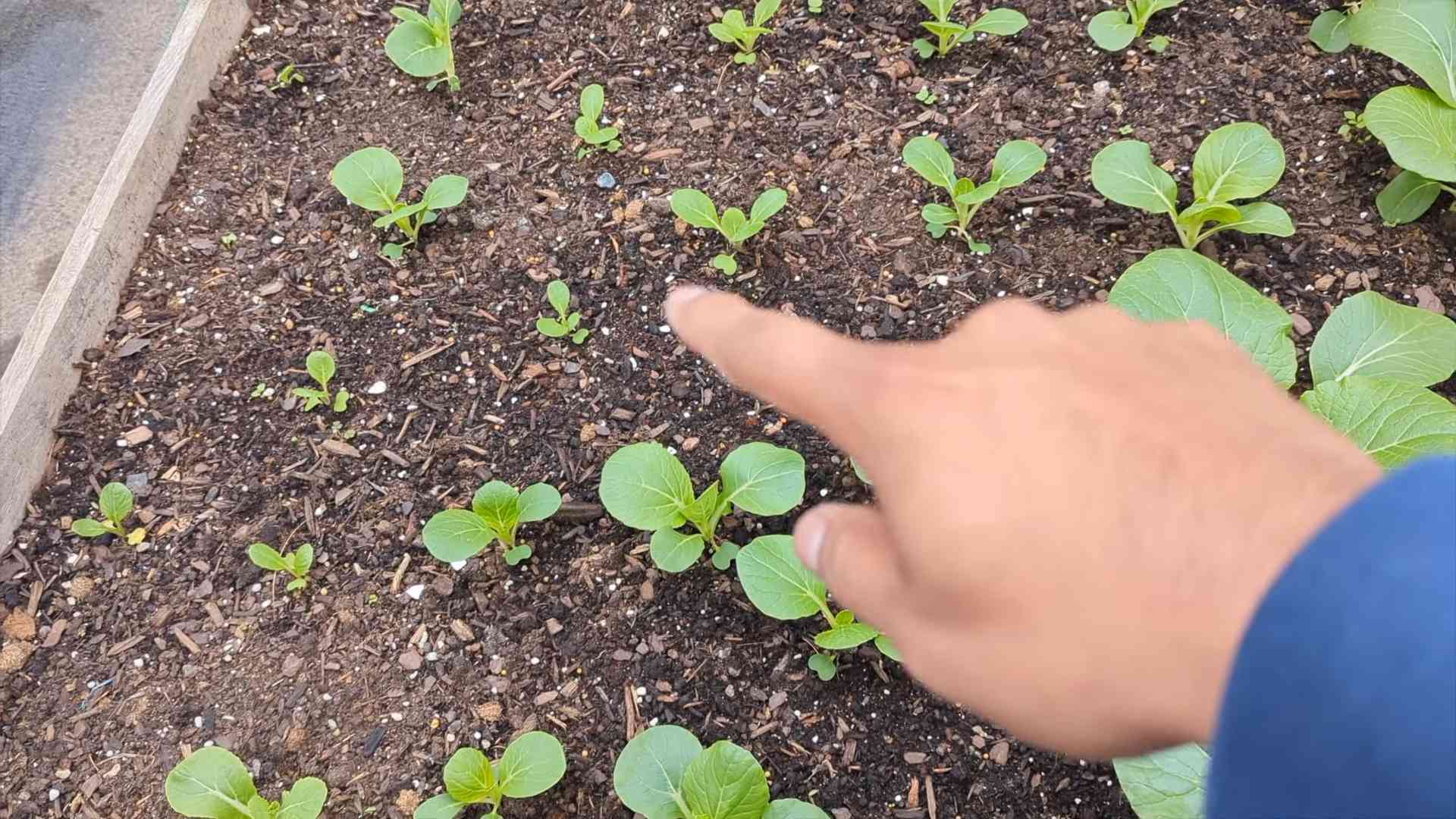
Conclusion
So, there you have it! Planting Bok Choy at home isn’t just a gardening project; it’s a gateway to fresher, healthier meals and a deeper connection with the food you eat. We’ve walked you through the simple steps, from selecting the right seeds to nurturing your seedlings, and now it’s time to get your hands dirty.
Why is this DIY trick a must-try? Because it puts you in control. You know exactly what goes into your Bok Choy – no pesticides, no hidden chemicals, just pure, homegrown goodness. Imagine the satisfaction of harvesting your own crisp, vibrant Bok Choy and using it in your favorite stir-fries, soups, or salads. The flavor is simply unmatched by store-bought varieties. Plus, it’s incredibly rewarding to watch something you’ve nurtured grow from a tiny seed into a thriving plant.
But the benefits don’t stop there. Growing your own Bok Choy is also a sustainable choice. You’re reducing your carbon footprint by cutting down on transportation and packaging. And you’re contributing to a healthier planet by avoiding harmful chemicals.
Looking for variations? Absolutely! Try planting different varieties of Bok Choy, such as Baby Bok Choy for a more delicate flavor or Shanghai Bok Choy for its thicker stems. Experiment with companion planting – Bok Choy thrives alongside herbs like dill and chamomile, which can help deter pests. You can also try succession planting, sowing new seeds every few weeks to ensure a continuous harvest throughout the growing season. If you’re limited on space, Bok Choy grows beautifully in containers, making it perfect for balconies or patios. Consider adding some organic fertilizer to the soil to boost growth and nutrient content.
We’re confident that you’ll find planting Bok Choy at home to be a fun, rewarding, and delicious experience. Don’t be afraid to experiment, learn from your mistakes, and most importantly, enjoy the process.
Now, we want to hear from you! Have you tried planting Bok Choy at home before? What are your favorite tips and tricks? Share your experiences in the comments below. We’d love to see photos of your homegrown Bok Choy and hear about your favorite recipes. Let’s build a community of Bok Choy enthusiasts and inspire others to get growing! We encourage you to share this article with your friends and family who might be interested in learning how to grow their own fresh vegetables. Let’s spread the word about the joys of homegrown Bok Choy!
So, grab your seeds, prepare your soil, and get ready to embark on a Bok Choy growing adventure. You won’t regret it! Happy gardening!
Frequently Asked Questions (FAQ)
What is the best time of year to plant Bok Choy?
Bok Choy is a cool-season crop, meaning it thrives in cooler temperatures. The best time to plant Bok Choy is in early spring or late summer/early fall. Avoid planting during the hottest months of summer, as the heat can cause the plants to bolt (go to seed prematurely), resulting in a bitter taste. For a spring crop, start seeds indoors 4-6 weeks before the last expected frost. For a fall crop, sow seeds directly into the garden in late summer or early fall, about 6-8 weeks before the first expected frost.
How much sunlight does Bok Choy need?
Bok Choy needs at least 4-6 hours of sunlight per day to thrive. While it can tolerate some shade, especially during the hottest part of the day, insufficient sunlight can result in leggy plants with poor growth. Choose a location in your garden that receives ample sunlight, or supplement with grow lights if necessary.
What kind of soil is best for Bok Choy?
Bok Choy prefers well-drained, fertile soil that is rich in organic matter. The ideal soil pH is between 6.0 and 7.5. Before planting, amend the soil with compost, aged manure, or other organic matter to improve drainage and fertility. You can also add a slow-release fertilizer to provide essential nutrients. If you’re growing Bok Choy in containers, use a high-quality potting mix.
How often should I water Bok Choy?
Bok Choy needs consistent moisture to thrive. Water deeply and regularly, especially during dry periods. Aim to keep the soil consistently moist but not waterlogged. Overwatering can lead to root rot, while underwatering can cause the plants to wilt and become stressed. Check the soil moisture regularly and water when the top inch feels dry. Mulching around the plants can help retain moisture and suppress weeds.
What are some common pests and diseases that affect Bok Choy?
Bok Choy can be susceptible to several pests and diseases, including aphids, cabbage worms, flea beetles, and downy mildew. To prevent pest and disease problems, practice good garden hygiene, such as removing plant debris and weeds. Inspect your plants regularly for signs of pests or diseases and take action promptly. You can use organic pest control methods, such as insecticidal soap or neem oil, to control aphids and other pests. Row covers can also help protect your plants from pests. To prevent downy mildew, ensure good air circulation and avoid overhead watering.
How do I harvest Bok Choy?
You can harvest Bok Choy at any stage of growth, depending on your preference. For baby Bok Choy, harvest when the leaves are about 4-6 inches long. For mature Bok Choy, harvest when the heads are firm and compact, typically about 6-8 weeks after planting. To harvest, cut the entire head at the base of the plant with a sharp knife. You can also harvest individual leaves as needed, starting with the outer leaves.
Can I grow Bok Choy in containers?
Yes, Bok Choy grows well in containers. Choose a container that is at least 12 inches deep and wide to allow enough room for the roots to grow. Use a high-quality potting mix and ensure that the container has drainage holes. Water regularly and fertilize as needed. Container-grown Bok Choy may need more frequent watering than plants grown in the ground.
How do I store harvested Bok Choy?
To store harvested Bok Choy, wrap it loosely in a damp paper towel and place it in a plastic bag in the refrigerator. It will typically keep for about a week. Avoid washing the Bok Choy before storing it, as this can promote spoilage. Wash it just before using it.
What are some ways to use homegrown Bok Choy?
Homegrown Bok Choy can be used in a variety of dishes. It’s delicious in stir-fries, soups, salads, and steamed dishes. You can also grill or sauté it. The leaves and stems are both edible and have a mild, slightly sweet flavor. Try adding it to your favorite Asian-inspired recipes or using it as a substitute for spinach or other leafy greens.
Can I save seeds from my Bok Choy plants?
Yes, you can save seeds from your Bok Choy plants, but it requires allowing the plants to bolt and produce seed pods. This is more easily done with a spring planting that overwinters. Be aware that Bok Choy can cross-pollinate with other members of the Brassica family, so if you’re growing other Brassicas, the seeds may not be true to type. Allow the seed pods to dry on the plant, then harvest them and extract the seeds. Store the seeds in a cool, dry place.

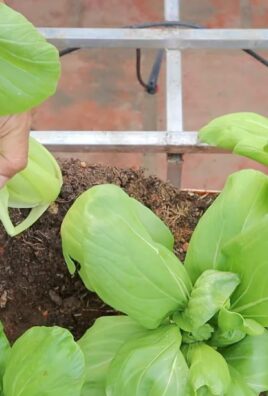
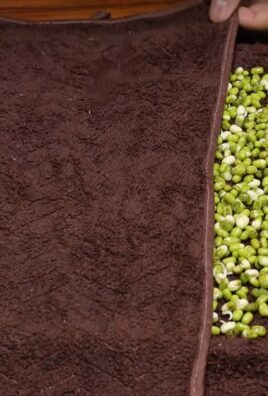
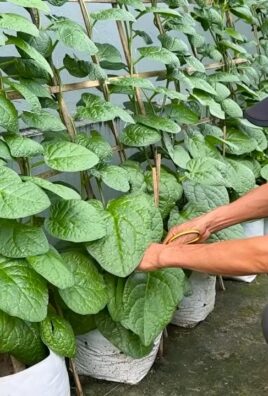
Leave a Comment